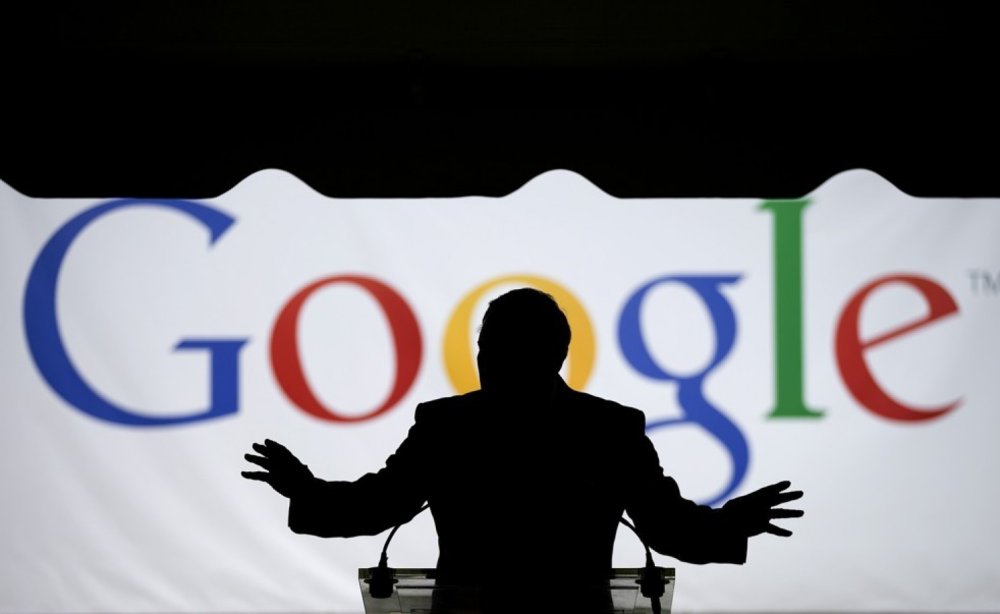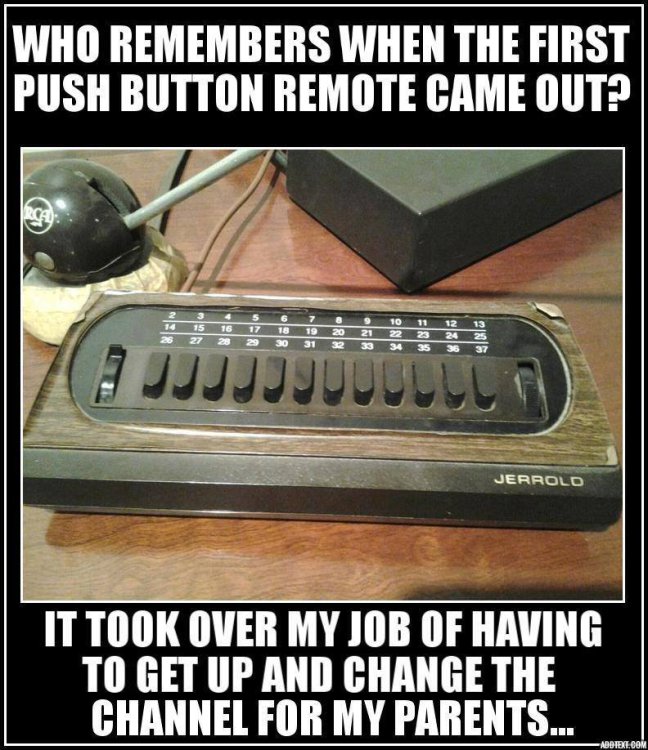-
Posts
7,282 -
Joined
-
Last visited
-
Days Won
2,416
Content Type
Forums
Blogs
Events
Resources
Downloads
Gallery
Store
Everything posted by allheart55 Cindy E
-
-
-

Amazon's app store compromises Android security
allheart55 Cindy E replied to starbuck's topic in Tech Help and Discussions
I love both Eset and Mbam. Using both of them, I've never gotten infected. -
-
-
An automated, prerecorded phone call that goes straight to voicemail may be slightly less annoying than a robocall that causes your phone to ring, but is it any less of a robocall? The Republican National Committee and the lobbyists at the U.S. Chamber of Commerce think these “ringless” robocalls are just fine, and have asked the FCC to allow telemarketers to use them. The Telephone Consumer Protection Act places restrictions on the use of prerecorded and autodialed calls to wireless phones, limit their use to emergencies and cases where the recipient has given prior consent to receiving the robocall. A company called All About The Message (AATM) has developed technology that lets it deliver messages straight to a recipient’s voicemail without actually calling the phone. It recently petitioned [PDF] the Federal Communications Commission, asking it to declare that such direct-to-voicemail messages fall outside the umbrella of the TCPA, or to grant the company a waiver to deliver these messages without fear of the penalties that could result from violating the TCPA. This petition has received support from businesses and politicians, particularly in the form of the U.S. Chamber of Commerce and the RNC. The Chamber’s comments [PDF] point out that this new ringless robocall technology is not like the random number or sequential number dialers that Congress first sought to restrict when it enacted the TCPA back in 1991, and argue that the FCC “cannot continue to sweep new technologies into this technologically-archaic statute.” If Congress wants to bar this technology, it should put it in law, claims the Chamber. That seems unlikely, given both the political advertising potential for ringless robocalls and the fact that the Republican National Committee is also asking for the FCC to grant the AATM petition. In its comments [PDF] submitted to the FCC, the RNC tries to make a First Amendment case for ringless robocalls. “The Commission should tread carefully so as not to burden constitutionally protected political speech without a compelling interest,” reads the comment. “Political speech is ‘at the very core of the First Amendment,’ and subjecting direct-to- voicemail political messages to the TCPA would unnecessarily and improperly restrict that speech.” To counter these industry and political claims, more than a dozen consumer advocacy groups — including our colleagues at Consumers Union — recently filed a joint comment [PDF] in opposition to the AATM petition. Direct-to-voicemail messages are “just as invasive, expensive, and annoying as calls and texts to cell phones,” argues the comment. “Granting the petitioner’s request would allow telemarketing and debt collection messages to overwhelm the voicemail boxes of consumers. Unlike their ability to limit calls and texts, consumers have no way to limit, restrict or block unwanted voicemail messages from particular callers.” While AATM claims in its petition that its technology does not constitute an actual phone call and therefore can’t be restricted by the TCPA, the consumer groups contend that it’s effectively the same concept as automated texting, which is similarly restricted by law, “so there is no technological or legal reason for them not to be covered by the same rules under the TCPA.” “This technology is essentially a perverted use of the standard voicemail system,” says Susan Grant, director of consumer protection and privacy at the Consumer Federation of America. “It delivers a pre-recorded message without ever giving the consumer the opportunity to answer — or to block — the incoming call.” Maureen Mahoney, policy analyst for Consumers Union argues that the FCC “shouldn’t make this problem even worse by weakening consumer protections and opening the door to unwanted voicemail messages from telemarketers and debt collectors.” Source: Consumerist
-
-
It’s been a bad month for Windows 7 users. The widespread WannaCry ransomware hit mostly Windows 7 machines, and now a new bug has been discovered that will slow down and crash Windows 7 and Windows 8 PCs. Ars Technica reports that the bug allows a malicious website to try and load an image file with the “$MFT” name in the directory path. Windows uses “$MFT” for special metadata files that are used by NTFS file system, and Windows 7 and Windows 8 fail to handle this directory name correctly. The Verge has successfully tested the bug on a Windows 7 PC with the default Internet Explorer browser. Using a filename with “c:\$MFT\123” in a website image, our test caused a machine to slow down to the point where you have to reboot to get the PC working again. Some machines may even bluescreen eventually, as the file system locks to that file and all other apps are unable to access files. The strange bug doesn’t affect Windows 10 users, and it’s similar to an old problem in Windows 95 and Windows 98 where references to “c:\con\con” would crash a machine. The NTFS bug appears to have been discovered earlier this week, and has been reported to Microsoft. It’s not yet clear when Microsoft will deliver a fix for the problem, but it affects Windows Vista (which is unsupported), Windows 7, and Windows 8 machines. Source: The Verge
-
-
-
-
Google will begin using data from billions of credit and debit card transactions — including card numbers, purchase amounts and time stamps — to solve the advertising juggernaut’s long-standing quest to prove that online ads prompt consumers to make purchases in brick-and-mortar stores, the company said on Tuesday. The advance, which enables Google to tell retailers how many sales they created through their digital ad campaigns, is a step toward what industry insiders have long described as the “holy grail” of digital advertising. If effective, the program could help persuade marketers to choose Google’s services over the television advertising that still gobbles up the lion’s share of retailers’ ad budgets. “Google — and also Facebook — believe that in order to get digital dollars from advertisers who are still primarily spending on TV, they need to prove that digital works,” said Amit Jain, chief executive of Bridg, a digital advertising startup that matches online to offline behavior. The announcement comes as Google is working to move past a advertising boycott of YouTube, its lucrative video site, after news reports that ads for mainstream brands were appearing alongside extremist content, including sites featuring hate speech and violence. But Googles's latest move to tie people’s digital trails to their real world behaviors is likely to renew concerns over whether technology giants and their affiliated companies know too much about people’s lives — and whether they disclose enough about how they collect and use that information. Google collects massive amounts of personal data from smartphones and desktop computers, including location information from Google Maps and other apps, the search terms that people use in a Google search, and people’s Web browsing habits. All of that information is tied to the real identities of users when they log into Google's services. Google executives say they are using complex, patent-pending mathematical formulas to protect the privacy of consumers when they match a Google user with a shopper who makes a purchase in a brick-and-mortar store. The mathematical formulas convert people’s names and other personal information into anonymous strings of numbers. The formulas make it impossible for Google to know the identity of the real-world shoppers, and for the retailers to know the identities of Google’s users, Google executives said. The companies know only that a match has been made. In addition, Google does not get a detailed description of the individual transactions, just the amount spent. “Through a mathematical property we can do double-blind matching between their data and our data,” said Jerry Dischler, vice president of product management for AdWords, in an interview. “Neither gets to the see the encrypted data that the other side brings.” Dischler, who said the company had been working on the technology for years, described the modeling as a “revolutionary” step forward for both Google and advertisers. But Google declined to share anything more than basic information about how the program worked. Google would not say how merchants had obtained consent from consumers to pass along their credit card information. In the past, both Google and Facebook have obtained purchase data for a more limited set of consumers who participate in loyalty programs. Consumers that participate in loyalty programs are more heavily tracked by retailers, and often give consent to share their data with third parties as a condition of signing up. (Not all consumers may realize they have given such consent, according to the digital privacy advocacy group Electronic Frontier Foundation). The technology giants introduced the use of what it called "double-blind encryption" in these initiatives. Dischler said that users who signed into Google’s services, including Gmail, Maps, Google Search, the Chrome browser, or the Google Play store, had consented, during the setup process, to Google sharing their data with third parties. Tuesday’s initiative enables Google to use transaction data from a much wider swath of consumers than ever before, but the lack of detail on how personal data was being handled caused concern for privacy advocates. "What's really fascinating to me is that as the companies become increasingly intrusive in terms of their data collection, they also become more secretive," said Marc Rotenberg, executive director of the Electronic Privacy Information Center. He urged government regulators and Congress to demand answers about how Google and other technology companies are collecting and using data of their users. Peter Eckersley, technology projects director for the Electronic Frontier Foundation, expressed skepticism about whether the "double-blind encryption" described by Google could protect privacy effectively. Past efforts by technology companies to protect the anonymity of users have been easily defeated, he said. "So this may well be a massive betrayal of the trust that consumers have placed in Google and their credit card companies, to keep their data confidential," Eckersley said. "But we won't even know for sure until Google publishes clear information on how it is handling this data." Google declined to disclose the names of the affiliated companies that play a key role in handling consumers' data. Retailers that participate in the program don’t provide the transaction data to Google directly. They share it with third-party data brokers that encrypt the information before passing it along. Such data providers have been the targets of cybercriminals in the past. In 2015, a hack of data broker Experian exposed the personal information of 15 million people. The tech giant also declined to describe its mathematical formulas in anything more than vague terms, citing a pending patent. Dischler said the work was based on a 2011 research paper by three MIT scientists, which was funded by Google and Citigroup. In addition to culling data from loyalty programs, Google and Facebook have used location data in their quest to measure whether consumers who viewed an online ad were influenced to go shopping in a brick-and-mortar store. In these cases, the companies roughly determine a person’s location — for example, whether they are inside or near a Home Depot or a mall — from GPS or other signals given off by smartphones. But actual purchase information is a much more powerful signal than a rough location estimate, Jain said. “These companies have to invest in finding the identity of the consumer at the moment when that shopper is at the cash register." Source: Washington Post
-
-
-
You'd think that since it's in the Windows Store that the glitches would have been ironed out. :big_ha:
-
-
You're welcome, Tony.
-
Sorry it took me so long to reply. I don't normally use Edge. I went to the Windows Store to get it. It doesn't show in in the list of extensions and if it's installed, it definitely is not blocking any ads. I went back to the Windows Store and the Get button is now grayed out.
-
-
-
-
Incessant


















